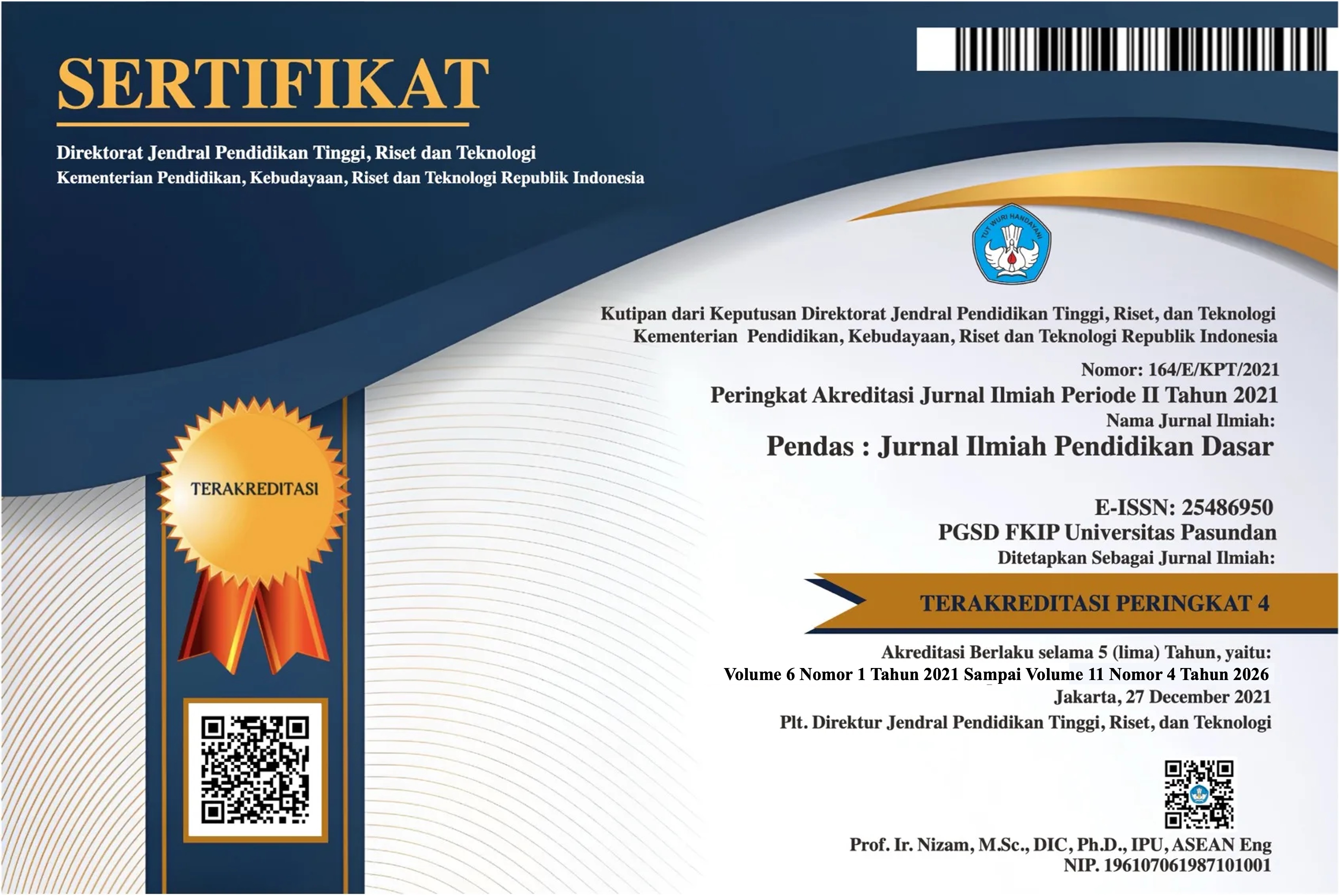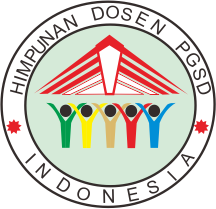PENERAPAN METODE CIRC DALAM MENINGKATKAN MAHARAH QIRA’AH SISWA PADA PEMBELAJARAN BAHASA ARAB
DOI:
https://doi.org/10.23969/jp.v10i01.22948Keywords:
CIRC method, Maharah Qira’ah, Arabic language learning, cooperative learning, reading comprehensionAbstract
This study aims to examine the effectiveness of the Cooperative Integrated Reading and Composition (CIRC) method in improving the maharah qira’ah (reading skills) of fifth-grade students at SD Islam Assalam Bandar Lampung. A quasi-experimental design was employed, with two groups: an experimental class using the CIRC method and a control class using conventional teaching methods. Data were collected through pre-test and post-test assessments. The results indicate that the CIRC method significantly enhances students' reading comprehension, as evidenced by a higher N-Gain score in the experimental class compared to the control class. The CIRC method encourages active student participation through group discussions, summarization, and peer-assisted learning, leading to improved reading comprehension and engagement. The study also highlights the potential of cooperative learning strategies in Arabic language education, particularly in fostering critical thinking and collaborative problem-solving. Despite its effectiveness, some challenges were identified, such as ensuring equal participation among students and managing class time efficiently. This study contributes to the adaptation of the CIRC method in Arabic language learning at the elementary level, an area that has received limited research attention. It recommends that teachers integrate CIRC as an alternative instructional strategy to enhance students' Arabic reading skills. Future research should explore the integration of digital learning tools with CIRC to further optimize its effectiveness in the modern educational context.
Downloads
References
Al-Jarf, R. (2020). Reading comprehension difficulties in Arabic as a foreign language. Journal of Arabic Linguistics, 12(2), 45-62.
Al-Qahtani, A. A. (2016). Why do EFL students experience difficulty in reading comprehension? English Language Teaching, 9(5), 78-89.
Aridan, M., Irwandani, Villarama, J. A., & Fuente, A. V. Dela. (2025). Post-Launch Public Interest in DeepSeek vs . ChatGPT : A Comparative Google Trends Analysis in Indonesia and the Philippines. Blockchain, Artificial Intelligence, and Future Research, 1(1), 1–12.
Arsyad, A. (2019). Media pembelajaran. RajaGrafindo Persada.
Brown, H. D. (2007). Teaching by principles: An interactive approach to language pedagogy. Pearson Education.
Burns, A. (2010). Doing action research in English language teaching: A guide for practitioners. Routledge.
Cohen, L., Manion, L., & Morrison, K. (2018). Research methods in education (8th ed.). Routledge.
Creswell, J. W. (2014). Research design: Qualitative, quantitative, and mixed methods approaches (4th ed.). SAGE Publications.
Denzin, N. K., & Lincoln, Y. S. (2011). The SAGE handbook of qualitative research (4th ed.). SAGE Publications.
Fraenkel, J. R., Wallen, N. E., & Hyun, H. H. (2012). How to design and evaluate research in education (8th ed.). McGraw-Hill.
Gattegno, C. (1972). Teaching foreign languages in schools: The Silent Way. Educational Solutions.
Hake, R. R. (1999). Analyzing change/gain scores. American Educational Research Association.
Hatch, E., & Lazaraton, A. (1991). The research manual: Design and statistics for applied linguistics. Newbury House.
Jatmiko, A., Armita, N., Irwandani, Saputro, T., & Aridan, M. (2024). Development of Science Learning Videos with the Canva Application on Socioscientific Issues Content. E3S Web of Conferences, 482, 05004. https://doi.org/10.1051/e3sconf/202448205004
Kemmis, S., & McTaggart, R. (2014). The action research planner: Doing critical participatory action research. Springer.
Koderi, K., Aridan, M., & Muslim, A. B. (2020). Pengembangan Mobile Learning Untuk Penguasaan Mufrodat Siswa MTs. Arabiyatuna : Jurnal Bahasa Arab, 4(2), 265. https://doi.org/10.29240/jba.v4i2.1769
Kolb, D. A. (1984). Experiential learning: Experience as the source of learning and development. Prentice Hall.
Masykur, R., Irwandani, I., Pricillia, A., & Aridan, M. (2024). Development of science e-modules with the STEM (Science, Technology, Engineering, and Mathematics) approach for islamic schools. Indonesian Journal of Science and Mathematics Education, 7(2), 404. https://doi.org/10.24042/ijsme.v7i2.20835
Mayer, R. E. (2009). Multimedia learning. Cambridge University Press.
Merriam, S. B. (2009). Qualitative research: A guide to design and implementation. Jossey-Bass.
Miles, M. B., Huberman, A. M., & Saldaña, J. (2014). Qualitative data analysis: A methods sourcebook (3rd ed.). SAGE Publications.
Mizan, A. N., Aridan, M., Akmansyah, M., Adelia, S., Asiyah, I. N., & Sholikha, L. M. (2022). The Development of Arabic Learning Media Based on Android for Senior High School Students. LISANIA: Journal of Arabic Education and Literature, 6(2), 178–189. https://doi.org/10.18326/lisania.v6i2.178-189
Nunan, D. (2019). Teaching English to speakers of other languages: An introduction. Routledge.
Patton, M. Q. (2002). Qualitative research and evaluation methods (3rd ed.). SAGE Publications.
Ramlan, R., Syahril, S., Kesuma, G. C., Erlina, E., & Aridan, M. (2023). DEVELOPMENT OF SOFTSKILL-BASED VIDEO GAME LEARNING MEDIA FOR MUFRᾹDAT MASTERY IN JUNIOR HIGH SCHOOL LEARNERS. Al Mi’yar: Jurnal Ilmiah Pembelajaran Bahasa Arab Dan Kebahasaaraban, 6(1), 301. https://doi.org/10.35931/am.v6i1.1706
Richards, J. C., & Lockhart, C. (1996). Reflective teaching in second language classrooms. Cambridge University Press.
Richards, J. C., & Rodgers, T. S. (2014). Approaches and methods in language teaching. Cambridge University Press.
Slavin, R. E. (2020). Educational psychology: Theory and practice. Pearson.
Syukur, A., Mukri, M., Aridan, M., & Jaafar, A. (2024). Empowering Islamic Community In Understanding Democracy and Shura Through The Wasathiyah Da‘wa Movement In Indonesia. JOURNAL OF INDONESIAN ISLAM, 18(1), 98. https://doi.org/10.15642/JIIS.2024.18.1.98-126
Downloads
Published
Issue
Section
License
Copyright (c) 2025 Pendas : Jurnal Ilmiah Pendidikan Dasar

This work is licensed under a Creative Commons Attribution 4.0 International License.



















